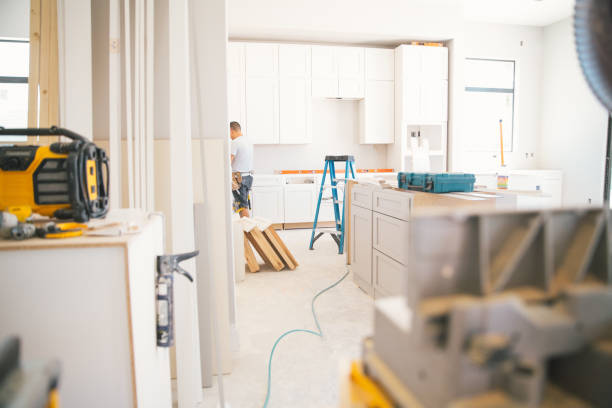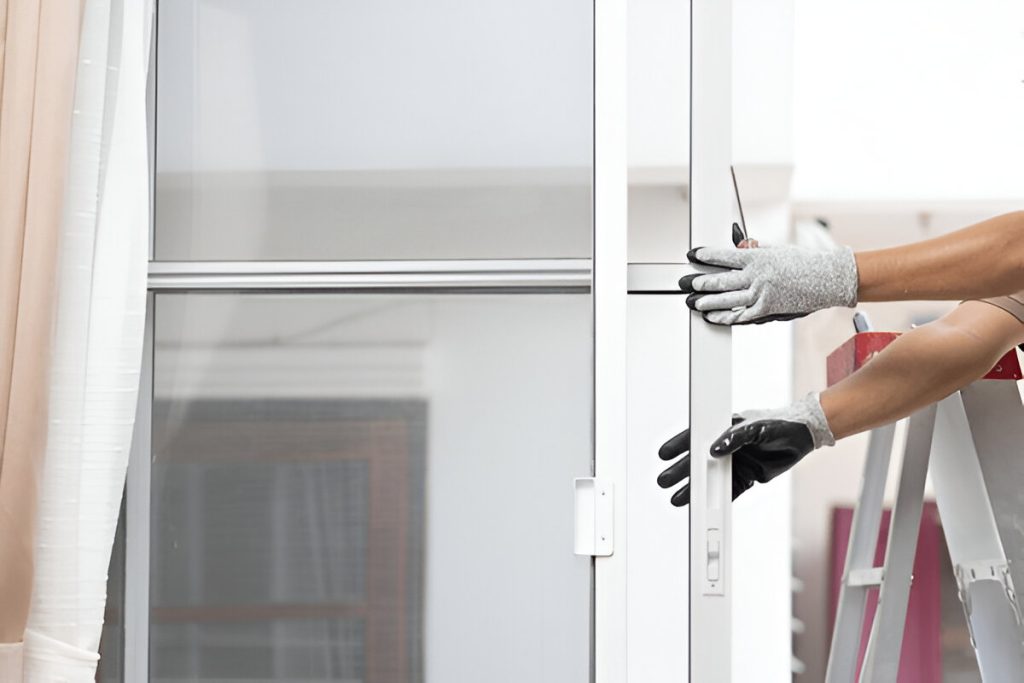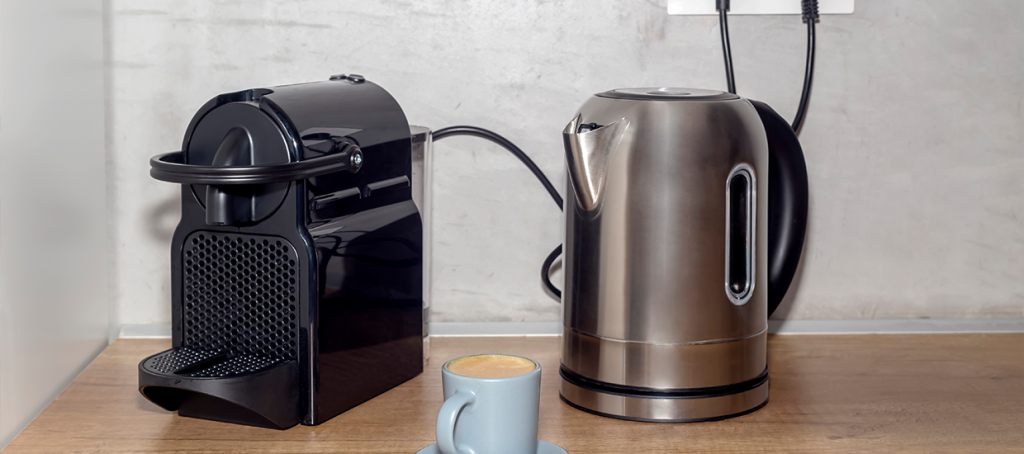Working from home is here to stay. A recent Gallup survey shows that eight in ten remote-ready workers split their time between home and office, making creating a space that works more important than ever, and that’s exactly what we explore here at Home Improvement. That shift makes one question urgent: How to design a home office that keeps you focused yet still feels good? A smart setup can raise work output, lift mood, and reduce stress. Think of the space as a tool, not a spare corner. When light, layout, and comfort line up, tasks move faster and ideas flow.
Moreover, this blog breaks the process into steps you can follow today. Firstly, you will locate the best spot. Next, you will pick furniture that supports your body. Then, you will shape light and color to guide your mind. Each tip uses simple language so that you can act right away. Ready to begin? Let’s dive into the first three keys.
Pick the Perfect Spot
Where you sit shapes your thoughts, so choosing the right location is step one in how to design a home office. Look for a quiet place during work hours. So, a stair landing or a wide hallway will work if you set clear rules.
- Draw a line: Use a small rug or low shelf to mark the work zone. Therefore, this visual cue tells your brain you are “at work.”
- Seek sunlight: If possible, place your desk near a window. Cornell studies show that natural light can lift energy by up to 15 %. If glare is a concern, add sheer blinds.
- Mind the outlets: Check where plugs sit. Your laptop, lamp, and phone also all need power. Running cords under a desk keeps the floors safe.
- Plan movement: Leave at least two feet behind your chair. Then, you can stand, stretch, and turn easily.
“Function comes first. A beautiful office must still work hard.”
When space is very tight, think vertical. Wall-mounted desks fold away after hours, and tall shelves turn unused air into storage. With the right spot chosen, you also set the stage for comfort and focus.
Choose Furniture That Fits You
At Home Improvement, we often say furniture is not just décor; it is health care in disguise. Therefore, a well-chosen chair and desk can reduce back pain and keep you on task. This part of “how to design a home office” focuses on pieces that serve your body.
Start with the chair.
Pick one that supports your lower back and lets your feet rest flat. Adjust the seat so that your elbows form a 90-degree angle when typing.
Think about desk height.
Standard desks stand 29 inches tall. If you are shorter or taller than average, an adjustable desk may help.
Add a riser
A laptop on a stand brings the screen to eye level, easing neck strain. Pair it with a separate keyboard for the proper wrist angle.
Use smart storage
Rolling carts slide under the desk when not in use. File boxes or wall pockets stop paper piles from growing.
However, small upgrades can have big payoffs. A soft footrest also improves circulation, and a thick seat pad reduces pressure on the hips. Because each body differs, test items before you buy. Comfort today means fewer doctor visits tomorrow.
Light Up Your Work
Good light does more than help you see. It also guides your mood and guards your eyes. Follow these lighting rules while planning how to design a home office.
- Layer your light: Blend three types.
- Ambient light fills the room (overhead fixtures).
- Task light targets the desk (a swing-arm lamp).
- Accent light adds style (a wall sconce or LED strip).
- Match light to task: Bright, cool bulbs keep you alert for data work, while warm bulbs calm the mind during creative tasks or late edits.
- To fight screen glare, Place lamps beside, not behind, monitors. Tilt the screens slightly down to cut reflections.
- Invite nature in: Daylight boosts serotonin, which can improve focus and mood. If your window faces bright sun, set blinds at a 45-degree angle.
Moreover, color ties in with lighting. Soft blues and greens calm nerves, and pops of yellow spark energy. Finally, use paint, art, or office tools in these shades to steer feelings throughout the day.
Moving On: Noise, Style, and Habits Shape Performance
You now know where, what to sit on, and how to light the room. Yet, the process of designing a home office is not finished. Sound, décor, and daily habits still steer focus and mood. In the next three sections, you will also tame noise, add style that works hard, and craft routines that keep energy high. So, each tip stays simple, research-backed, and ready for action.
Tame Sound and Cut Distraction
Open mics, street traffic, and phone alerts steal brainpower. Studies show that unmanaged office noise drives stress and lowers output. Complaints have also soared as hybrid staff return to shared spaces, proving noise is a top hurdle. Luckily, small fixes also help.
- Soft surfaces soak up sound. Thick rugs, curtains, and fabric panels cut echo and calm the room.
- Add plants. Leaves scatter sound waves while lifting air quality and mood.
- Close gaps. Seal door frames with stick-on strips. Place bookcases against thin walls.
- Use a steady sound. White-noise machines mask sudden spikes and can enhance focus for word tasks.
- Wear light headphones. Pick open-back designs that block chatter yet let you hear the doorbell.
“Even modest noise control returns big gains in well-being.”
However, keep volume around 45–50 dB—about a quiet library—for best mental speed. Check levels with a free phone app and adjust items until readings fall. Consistent quiet primes your brain before you even start typing.
Add Décor That Works Hard
Style should serve you, not distract. Color and greenery drive mood and clarity when chosen with care. Workspace designers note that cool blues aid calm focus, while soft greens ease eye strain and balance energy. Warm accents like muted yellow can spark idea generation in short bursts.
Color Impact Table
| Hue | Main Effect | Best Use |
| Soft Blue | Steady focus | Data entry, reading |
| Sage Green | Calm + restore | Long calls, writing |
| Warm Yellow | Idea spark | Brainstorm boards |
| Neutral Gray | Visual rest | Background areas |
Plants add more than looks. Research ties indoor greenery to lower blood pressure, less stress, and higher work speed. Even small peace lilies or snake plants bring comfort without much care. Though air-purifying claims are often overblown, the mental boost is real.
So, here are quick décor wins:
- Hang one framed print that inspires but does not clutter sight lines.
- Group three matching storage boxes to hide cables and papers.
- Place a mirror opposite a lamp to bounce light and enlarge space.
Keep desk surfaces 75 % clear. Finally, the eye enjoys open lines, and the brain follows suit.
Build Healthy Habits and Daily Flow
Furniture and color help, yet routine locks gain in place. The Bureau of Labor Statistics links remote work with higher total factor productivity when workers pace tasks well. Experts also urge timed breaks to avoid fatigue. So, a popular pattern is 45 minutes of focused work followed by a 15-minute pause. Harvard reviews also show that short, regular breaks lift output and lower errors.
- Start strong. Review today’s top three goals: open curtains, stretch, sip water.
- Move often. Stand, roll shoulders, or walk during every break. Spine experts warn that long sitting strains discs and muscles.
- Switch zones. Read reports in a chair across the room to reset posture.
- End clean. File loose notes and shut down screens. This clear-desk ritual also helps your brain power off.
“Micro-breaks protect energy the way seat belts protect drivers.”
Planning sessions the night before also saves morning willpower. Write a quick list, leave it on the keyboard, and you start fresh instead of searching for direction.
Tech Essentials and Digital Safety
Technology enhances or detracts from your day when you ask how to design a home office, plan gear that speeds tasks, and guard data.
Key Points
- Dual monitors save time. Users finish work up to 42 % faster when they add a second screen.
- Standing desk combos are good for health. Recent ergonomic reviews have shown that switching between sitting and standing eases back strain and boosts focus.
- Secure your files. The average breach cost hit a record in 2024, so every remote setup needs basic cyber-hygiene.
- Tidy cables protect you. Simple covers also cut trip hazards and prevent pets from chewing power lines.
- Pick an ergonomic input: curved keyboards and vertical mice lower repetitive-strain injury risk in controlled trials.
Tech Checklist
| Item | What to Look For | Why It Matters |
| Dual monitors | IPS panels, height-adjustable stands | 42 % productivity gain |
| Ergonomic keyboard & mouse | Split keys, neutral wrist angle | Cuts hand pain |
| Surge protector | UL-listed, 1,000+ joules | Shields gear from voltage spikes |
| Cloud backup | 256-bit encryption, version history | Part of the 94 % enterprise cloud adoption |
| Cable sleeves | Fire-retardant, floor channels | Reduces trips and clutter |
Because threats evolve, schedule software updates weekly. Also, two-factor sign-in is enabled on every device. So, these quick steps close the most common attack paths and keep your workflow safe.
Storage, Decluttering, and Final Polish
Clutter steals attention. Studies from Princeton show that extra objects force the brain to filter more signals, slowing thinking. A 2024 survey even found 40 % of home workers also admit their desks are “chaos,” yet 87 % feel a tidy space boosts output. So, clearing and storing is the last phase of how to design a home office. When you keep only the tools you need in sight, your attention lands on work, not mess.
Action Steps
- Use the “one-touch” rule. When a paper enters your space, file, scan, or recycle it immediately.
- Add vertical storage. Tall bookcases and pegboards hold supplies without eating up floor area.
- Label everything. Simple tags cut search time later.
- Block visual noise. Closed cabinets hide items that would otherwise distract.
- Reset nightly. A two-minute desk sweep lowers cortisol and primes your mind for the next day.
Moreover, researchers link organized desks to better mood, sharper focus, and faster task completion. Even wiping crumbs and stacking notes can lift mental clarity within minutes.
Your Roadmap to a Smarter Workspace
You now hold every core piece: location, ergonomic furniture, layered light, quiet acoustics, inspiring décor, healthy routines, smart tech, and clutter-free storage—just as we’ve outlined here on Home Improvement—each step for how to design a home office. Therefore, the rewards are clear: quicker tasks, fewer aches, safer data, and a calmer mind. Put one change in place today—maybe a second monitor or a five-minute tidy. Momentum will follow, and soon your office will support every goal you set.











